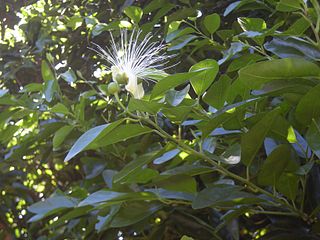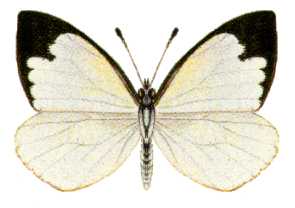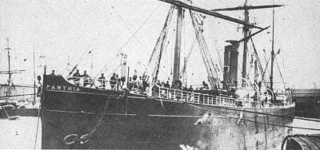
Parthamaspates was a Parthian prince who ruled as a Roman client king in Mesopotamia, and later of Osroene during the early second century AD. He was the son of the Parthian emperor Osroes I.

Orodes III was king of the Parthian Empire from 4 to 6. Albeit he was an Arsacid, his lineage is unknown. He was raised to the throne by the nobility two years after the death of the previous co-rulers, Phraates V and Musa. Information regarding the brief reign of Orodes III is lacking. He was killed after a reign of 2 years. He was succeeded by Vonones I.

Relations between the Roman and Iranian states were established c. 92 BC. It was in 69 BC that the two states clashed for the first time; the political rivalry between the two empires would dominate much of Western Asia and Europe until 628. Initially commencing as a rivalry between the Parthians and Rome, from the 3rd to mid-7th centuries the Roman Empire and its rival Sassanid Persia were recognized as two of the leading powers in the world.

The Parthian Empire, also known as the Arsacid Empire, was a major Iranian political and cultural power centered in ancient Iran from 247 BC to 224 AD. Its latter name comes from its founder, Arsaces I, who led the Parni tribe in conquering the region of Parthia in Iran's northeast, then a satrapy (province) under Andragoras, who was rebelling against the Seleucid Empire. Mithridates I greatly expanded the empire by seizing Media and Mesopotamia from the Seleucids. At its height, the Parthian Empire stretched from the northern reaches of the Euphrates, in what is now central-eastern Turkey, to present-day Afghanistan and western Pakistan. The empire, located on the Silk Road trade route between the Roman Empire in the Mediterranean Basin and the Han dynasty of China, became a center of trade and commerce.

Parthia is a historical region located in northeastern Greater Iran. It was conquered and subjugated by the empire of the Medes during the 7th century BC, was incorporated into the subsequent Achaemenid Empire under Cyrus the Great in the 6th century BC, and formed part of the Hellenistic Seleucid Empire after the 4th-century BC conquests of Alexander the Great. The region later served as the political and cultural base of the Eastern Iranian Parni people and Arsacid dynasty, rulers of the Parthian Empire. The Sasanian Empire, the last state of pre-Islamic Iran, also held the region and maintained the seven Parthian clans as part of their feudal aristocracy.

Capparis arborea is a bush or small tree occurring in eastern Australia. Its habitat is rainforest, usually riverine, littoral or the drier rainforests. It is distributed from the Hunter River, New South Wales to Cape Melville in tropical Queensland. Common names include native pomegranate, wild lime, wild lemon and brush caper berry. Capparis arborea is a host plant for the caper white , which migrate across the eastern seaboard in large numbers in the summer. It also feeds the chalky white

Elodina is a genus of butterflies in the family Pieridae. It is the only genus of the tribe Elodinini. It contains about 30 species.

Elodina angulipennis is a butterfly in the family Pieridae. It is found along the north-eastern coast of Australia.

Elodina padusa, the narrow-winged pearl white, is a butterfly in the family Pieridae. It is found across the central latitudes of Australia, including Victoria and South Australia.

Elodina perdita, the northern pearl white or delicate pearl white, is a butterfly in the family Pieridae. It is found in the tropical north of Queensland, Australia.
Parthia (1956–1982) was a British Thoroughbred racehorse and sire. In a career that lasted from October 1958 to July 1960 he ran twelve times, winning six races, four of which are now Group races. His most notable success came in the 1959 Epsom Derby. He went on to have a successful stud career in Great Britain and Japan.

Parthamasiris, also known as Partamasir or Parthomasiris was a Parthian prince who served as a Roman client king of Armenia.
Mylothris elodina is a butterfly in the family Pieridae. It is found in Cameroon, Gabon, Angola and the Democratic Republic of Congo.

SS Parthia (1870–1956) was an iron-hulled transatlantic ocean liner built for the Cunard Line by William Denny and Brothers in Dumbarton, Scotland. Her sister ships were the Abyssinia and Algeria. Unlike her two sisters, Parthia was smaller, built in a different shipyard and had a slightly different funnel arrangement. The Parthia was retired by Cunard in 1883 and sold to John Elder & Co., who subsequently transferred her to the Guion Line. After serving with the Guion Line and operating on trans-Pacific routes with the Canadian Pacific Railway Company, she was refitted and renamed Victoria.

RMS Parthia was the second of two all first class transatlantic passenger cargo liners built for the Cunard Line. She later served on the London to Auckland route for the New Zealand Shipping Company under the name Remuera, and still later as a Pacific cruise ship under the name Aramac. She was scrapped in 1969–70.

Elodina biaka is a butterfly in the family Pieridae. It was described by James John Joicey and Alfred Noakes in 1915. It is endemic to Biak in the Australasian realm.

Capparis lucida, commonly referred to as the coast caper, is a versatile plant that often grows as a small tree or a shrub, usually reaching heights of 3 to 4 meters. While it may sometimes climb, it typically produces flowers and fruits as a shrub. The leaves are glossy and range from 3 to 10 cm long and 2 to 5 cm wide, with a noticeable central vein and smaller veins forming loops near the edges. Both the petioles and twigs are covered in fine, soft hairs.














